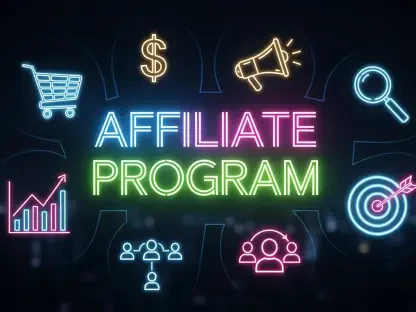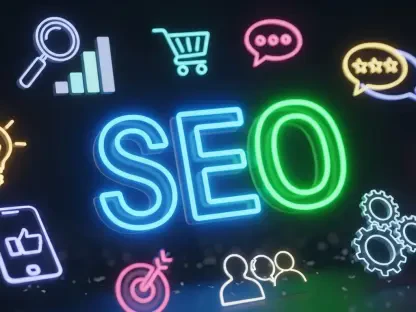Understanding the B2B Marketing Landscape
In today’s fast-paced digital economy, B2B marketing stands as a critical driver of business growth, connecting companies with the partners and clients they need to thrive in competitive environments. The ability to generate high-quality leads and nurture long-term relationships has become a cornerstone of success for organizations across industries. With global markets becoming increasingly interconnected, the pressure to stand out amid a sea of competitors has never been greater, pushing businesses to rethink traditional approaches and embrace innovative solutions.
The B2B marketing landscape is shaped by rapid technological advancements and the growing dominance of digital platforms. Major players in this space are leveraging tools like artificial intelligence, data analytics, and cloud-based systems to refine their outreach and engagement efforts. The competitive nature of these markets demands agility, as companies must adapt to shifting buyer expectations and complex decision-making processes. Digital trends, such as the rise of social media for professional networking and the integration of automation, are redefining how businesses position themselves to attract and retain clients.
Technology plays a pivotal role in this evolution, enabling more precise targeting and streamlined communication. From sophisticated customer relationship management (CRM) systems to real-time analytics dashboards, these tools empower marketers to make informed decisions and optimize campaigns for maximum impact. As the landscape continues to evolve, understanding these dynamics becomes essential for any organization aiming to build a robust pipeline of leads and sustain growth in a crowded marketplace.
Key Trends and Opportunities in B2B Lead Generation
Emerging Trends and Technologies
The B2B marketing sphere is witnessing a transformative shift driven by personalization, automation, and a pronounced move toward digital platforms. Personalization allows companies to tailor messaging and solutions to specific pain points of decision-makers, fostering deeper connections. Meanwhile, automation technologies, such as email marketing software and AI chatbots, are reducing manual workloads and enhancing efficiency in nurturing prospects through extended sales cycles.
Evolving buyer behaviors are also reshaping the approach to lead generation. Modern B2B buyers often conduct extensive research before engaging with vendors, relying on online content and peer reviews to inform their choices. This trend, coupled with longer decision-making timelines, creates opportunities for businesses to position themselves as trusted advisors through consistent digital presence and value-driven interactions. Technological advancements, like machine learning algorithms, further enable predictive insights, helping marketers anticipate needs and deliver timely solutions.
These developments open doors to innovative ways of capturing attention in a crowded field. Virtual events, interactive webinars, and targeted social media campaigns are gaining traction as effective methods to engage audiences. By aligning with these emerging trends, businesses can tap into new avenues for lead generation, ensuring they remain relevant and competitive in a rapidly changing environment.
Market Insights and Growth Potential
Data underscores the challenges and opportunities within B2B marketing, with 63% of marketers citing lead quality as a top concern according to recent industry reports. This statistic highlights the pressing need for strategies that not only attract prospects but also ensure they are a good fit for the business. Addressing this gap is crucial for maximizing return on investment and building sustainable growth trajectories over time.
Looking ahead, the B2B marketing sector shows strong potential for expansion, particularly as digital adoption accelerates across industries. Projections suggest significant growth in investment toward automation and data-driven tools from 2025 to 2027, reflecting a broader recognition of their value in enhancing lead generation outcomes. Companies that prioritize innovative approaches, such as integrating advanced analytics into their workflows, stand to gain a competitive edge in capturing high-value opportunities.
The impact of adopting cutting-edge strategies cannot be overstated. Businesses that embrace these tools are better positioned to refine their targeting, improve conversion rates, and ultimately drive revenue. As market dynamics continue to shift, staying ahead of the curve with forward-thinking practices will be a defining factor for success in the years to come.
Challenges in B2B Marketing and Lead Generation
Navigating the complexities of B2B marketing often involves confronting significant hurdles that can impede lead generation efforts. One prominent issue is the struggle with lead quality, where businesses attract numerous prospects but fail to convert them into viable opportunities due to mismatched needs or priorities. This challenge is compounded by prolonged decision-making processes, as multiple stakeholders typically weigh in on purchases, slowing down the sales cycle.
Another critical obstacle is the lack of alignment between sales and marketing teams, which can result in disjointed messaging and missed opportunities. Without a unified approach, efforts to engage prospects may fall short, leading to inefficiencies and frustration across departments. These misalignments often stem from differing goals or inadequate communication channels, creating gaps in the overall strategy that hinder progress.
To address these barriers, practical solutions can make a substantial difference. Conducting regular brand audits helps identify inconsistencies in messaging and positioning, while shared analytics platforms foster collaboration between teams by providing a common data foundation. Additionally, enhancing digital presence through optimized websites and targeted campaigns can better attract and qualify leads, ensuring that efforts are focused on prospects with genuine potential for conversion.
Core Strategies for Effective B2B Lead Generation
Effective B2B lead generation hinges on implementing well-structured strategies that address the unique demands of business clients. Defining detailed buyer personas stands as a foundational step, enabling marketers to understand the motivations, challenges, and preferences of decision-makers. This clarity ensures that outreach efforts resonate with the right audience, increasing the likelihood of meaningful engagement.
Creating educational content is another powerful tactic, as it positions a company as a thought leader while guiding prospects through complex buying journeys. Offering whitepapers, case studies, and industry reports can build trust and keep potential clients engaged over extended periods. Alongside this, maintaining consistent branding across all touchpoints, from websites to advertisements, reinforces recognition and credibility in a competitive market.
Leveraging automation tools like CRM systems streamlines operations by personalizing interactions at scale, while continuous monitoring of key performance indicators (KPIs) such as conversion rates and engagement metrics allows for real-time adjustments. These strategies collectively enhance trust, improve lead quality, and simplify processes, enabling businesses to stand out. By focusing on data-driven insights and operational efficiency, companies can cultivate stronger connections and achieve sustained growth in challenging B2B environments.
Implementing B2B Marketing Strategies Successfully
Translating B2B marketing strategies into tangible results requires a methodical approach grounded in actionable steps. Conducting content audits is a vital starting point, as it reveals gaps in existing materials and ensures that messaging aligns with audience needs. This process helps refine the value proposition, making communications more relevant and impactful for potential leads.
Optimizing website user experience (UX) also plays a crucial role in driving conversions. A seamless, intuitive interface with clear calls-to-action can significantly improve the likelihood of visitors taking desired steps, whether filling out forms or requesting demos. Simultaneously, aligning sales and marketing teams through shared objectives and integrated tools fosters a cohesive effort, ensuring that both departments work toward common outcomes with synchronized messaging.
Operational synergy and data-driven decision-making are indispensable for achieving measurable success. By leveraging analytics to track performance and adjust tactics, businesses can respond swiftly to market shifts and buyer feedback. This adaptability, paired with a commitment to refining processes, ensures that lead generation efforts remain effective and aligned with overarching goals, ultimately strengthening the foundation for growth.
Future Outlook for B2B Marketing and Lead Generation
The trajectory of B2B marketing points toward an increasing reliance on emerging tools and technologies that promise to redefine engagement. Artificial intelligence is set to play a larger role, particularly in enabling hyper-personalized experiences through predictive analytics and tailored content delivery. As these innovations mature, they will likely become integral to how businesses identify and nurture high-potential leads.
Data analytics will continue to grow in importance, offering deeper insights into buyer behavior and campaign performance. This trend underscores the need for adaptability, as marketers must stay attuned to a fast-evolving digital landscape and shifting client expectations. Global market dynamics, including economic fluctuations and regional preferences, will also shape strategies, requiring a nuanced approach to outreach and positioning.
Potential disruptors, such as regulatory changes around data privacy or breakthroughs in communication platforms, could alter the playing field. However, these challenges also present opportunities for those willing to innovate and pivot. By staying proactive and embracing change, B2B marketers can harness these developments to build more resilient and impactful lead generation frameworks in the coming years.
Conclusion: Building a Strong Foundation for B2B Growth
Reflecting on the insights discussed, it becomes evident that structured B2B marketing strategies play a transformative role in enhancing lead generation and fostering client retention. The exploration of trends, challenges, and actionable approaches highlighted the power of consistency, trust, and adaptability in navigating competitive markets. Each element, from personalization to data analytics, contributes to a clearer understanding of how businesses can elevate their outreach efforts.
Looking back, the emphasis on aligning sales and marketing teams, alongside leveraging automation, stands out as pivotal in overcoming common obstacles. These efforts lay the groundwork for improved lead quality and streamlined processes. For businesses moving forward, the next step involves investing in scalable tools and fostering a culture of continuous improvement to stay ahead of industry shifts.
Beyond immediate tactics, a broader consideration emerges around anticipating future disruptions and buyer needs. Companies are encouraged to explore emerging technologies like AI-driven solutions and to prioritize flexible strategies that can adapt to unforeseen changes. By committing to these forward-thinking practices, B2B organizations can ensure sustained growth and relevance in an ever-evolving digital arena.









